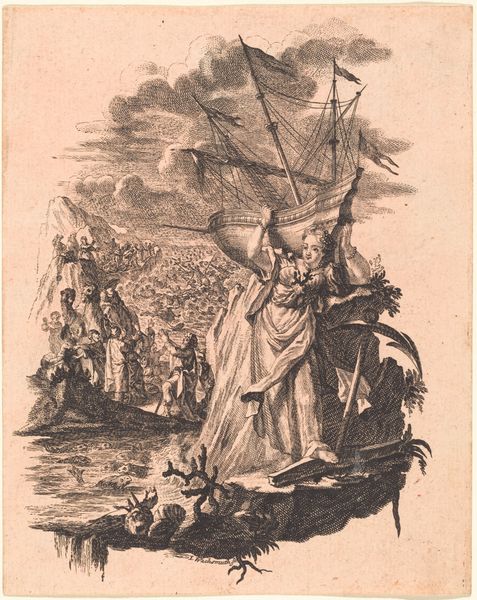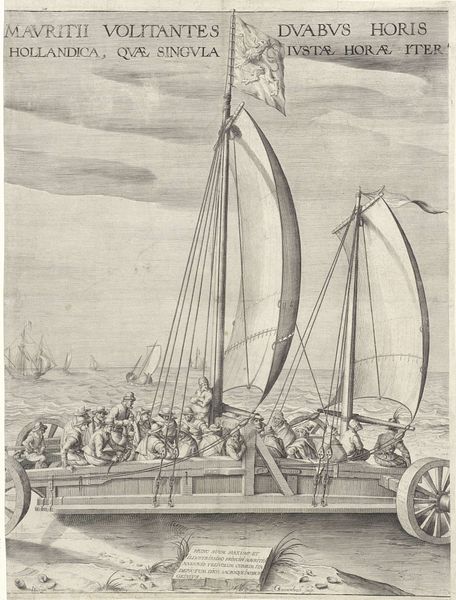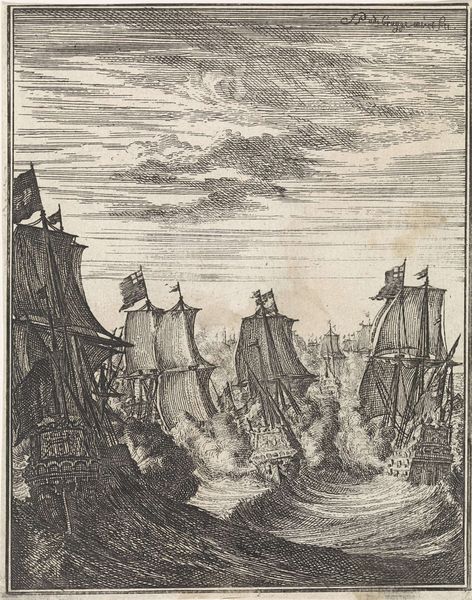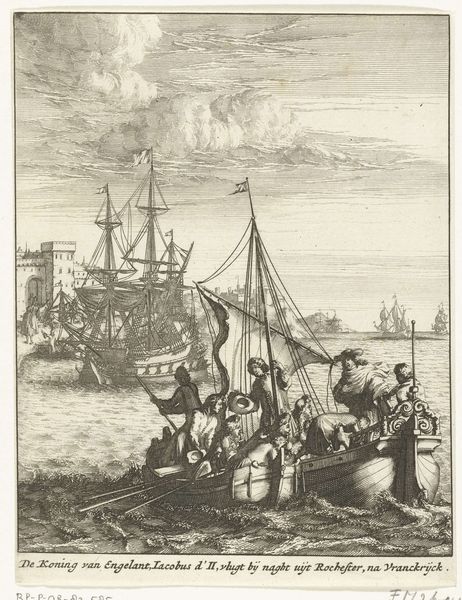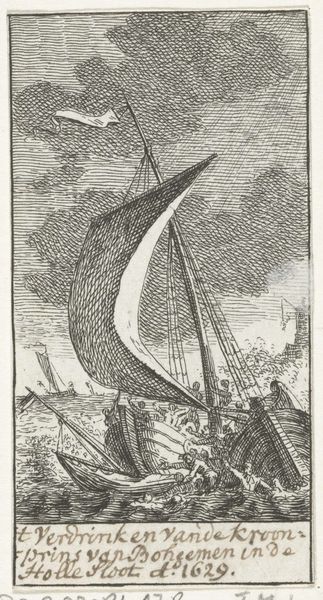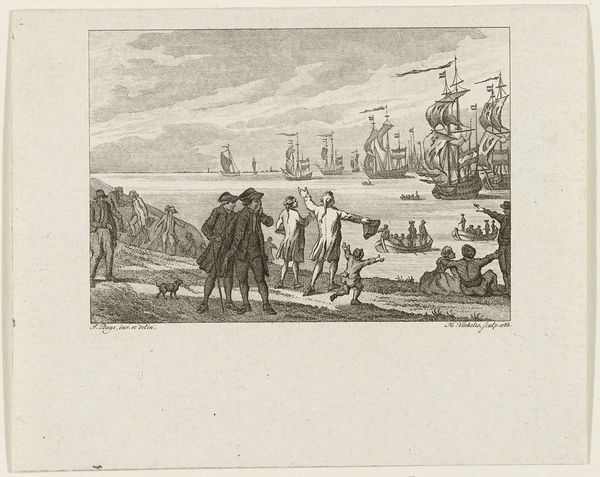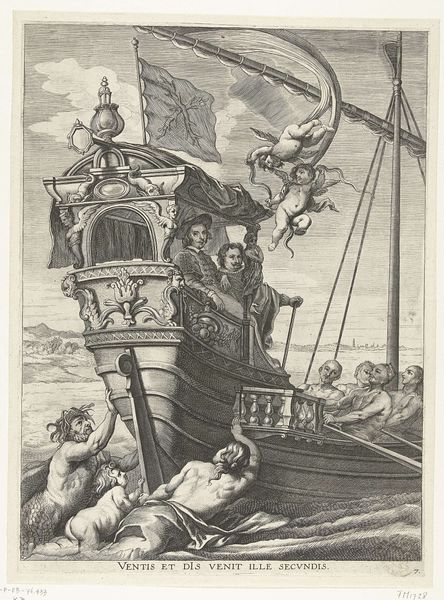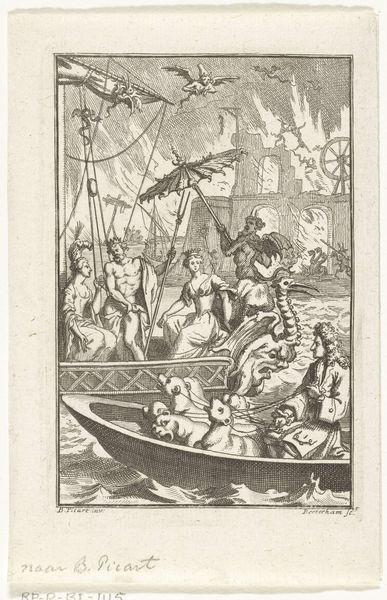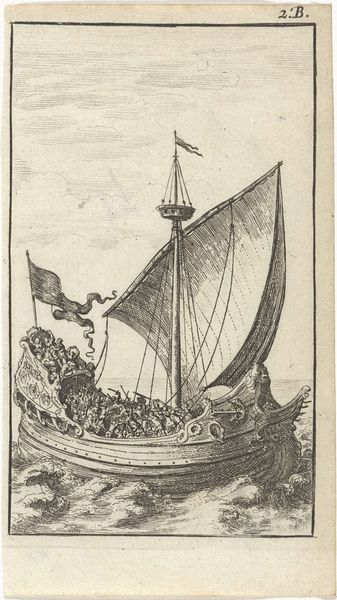
print, engraving
#
baroque
# print
#
old engraving style
#
landscape
#
figuration
#
line
#
history-painting
#
engraving
Dimensions: height 130 mm, width 76 mm
Copyright: Rijks Museum: Open Domain
Curator: This is "Two Galleys with Soldiers at Sea," an engraving made in 1666 by Abraham Dircksz Santvoort. It's currently held here at the Rijksmuseum. Editor: It's striking how the stark lines create such a sense of dynamism, even drama. The way the waves are rendered gives them a real sense of restless energy, wouldn't you say? Curator: Absolutely. Santvoort was working in a period of intense naval conflict for the Dutch Republic, and images like this, distributed widely through print, played a significant role in shaping public perception of these events. Editor: I see. So the social context lends the work a layer of political meaning. But back to the form: I’m interested in the composition. The large rock formation on the left feels almost claustrophobic, contrasting with the implied vastness of the ocean. Curator: That positioning directs our eye and certainly mirrors the unease and dangers present at that time. These ships weren't merely transporting soldiers; they were projecting power. These engravings supported a particular narrative, demonstrating the Republic's martial strength. Editor: Right, and you see that symbolism even within the ship's design, a dragon's head prow imposing itself on the water. And look at how those diagonal lines implying both rain and sea blend the ship almost seamlessly with nature. I do like the rendering. Curator: That is evocative given that naval battles were about resources and trade, not about the individuals. These ships became symbols within a complex network of social and economic factors. Editor: The power dynamics are palpable, especially in how the figures occupy space on the ship, like players on a stage set. One can almost hear their hushed commands carried upon the waves. I appreciate how this small image evokes such an expanded world! Curator: It’s always compelling to observe how historical circumstances shaped not only the content but also the reception of these prints, reinforcing existing socio-political viewpoints. Thank you for taking the time to examine this piece together! Editor: My pleasure. Exploring its visual vocabulary together offered another fascinating layer to my viewing, revealing some exciting ideas in terms of the work's lines, shading, composition, and materiality.
Comments
No comments
Be the first to comment and join the conversation on the ultimate creative platform.

